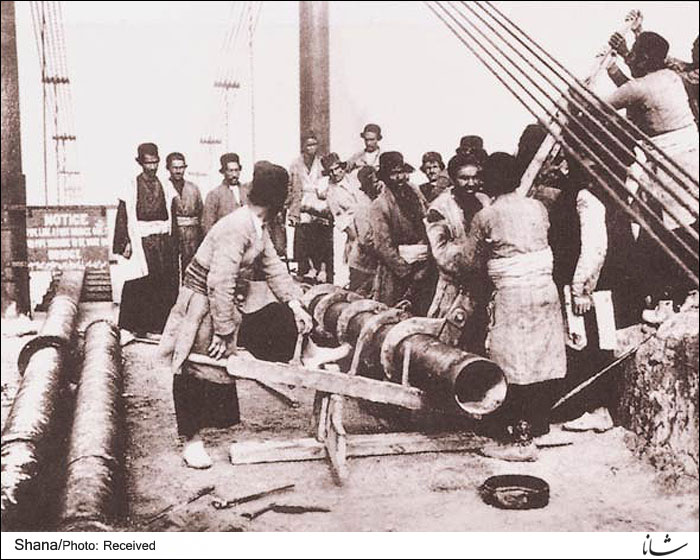When it comes to the history of oil in Iran, Abadan oil refinery is the first thing to strike the mind. This refinery is now expected to become of the best and the most modern refineries in the world.
Here is Abadan. In 1909, one year after oil was discovered in Masjed Soleyman, the Anglo-Persian Oil Company purchased one square mile of land in Bahmanshir area from Sheikh Khazal Bakhtiari, the local governor, and started building the most important oil refinery in the world. Due to proximity to oil wells and fresh water, the location of the refinery was proper. It could also serve as a favorable harbor for oil tankers and cargo vessels. Three years later, this refinery started work with a capacity of 2,500 b/d.
In the World War I, Abadan refinery was of great help to Britain’s war operations through oil refining. The British government seriously protected the treatment facility throughout WWI. The big war became a pretext for the development of the refinery to produce more fuel for warships. During WWII, after Allies lost Burma oil and refinery, Abadan refinery became the center of attention.
After oil industry was nationalized in Iran in 1951 and foreigners left Iran, maintenance of the refinery was assigned to Iranian staff and oil service workers. In 1954, an agreement was signed with the International Oil Consortium.
Before the imposed war in 1980, Abadan refinery produced 108 types of products. It had the most sophisticated installations for exporting products, used natural gas as its main source of fuel and was fitted with the largest electronic measurement machinery. Therefore, it was considered the most important refinery in the world.
Responding to an appeal by the late revolutionary founder Ayatollah Ruhollah Khomeini, the striking workers did not return to work. At the same time the military forces stopped distribution of kerosene in the country and that ramped up pressure on people. Therefore, the general strike ended and the refinery resumed production.
On September 21, 1980, workers were going to the refinery. But out of a sudden, loud explosions were held and the city of Abadan came under shelling. On September 23, the refinery was attacked by the forces of the former Baathist regime of Iraq. Abadan refinery was the first oil facility to be targeted by Iraqi warplanes. That was when a new chapter in efforts and sacrifices of the refinery workers started.
The formation of fuel committee to handle fuel distribution was a major wartime initiative at Abadan refinery. In those days, huge amounts of gasoline produced at Abadan refinery were stocked in soccer pitches. Another initiative was the production of gasoline with benzene. That was of great help to Iranian troops at the front.
In October 1988, several months after Iran accepted the UN-brokered Resolution 598, staff of all refineries across the country rushed to help the Abadan refinery. In the following years, a three-phase development plan was worked out for the refinery.


Your Comment